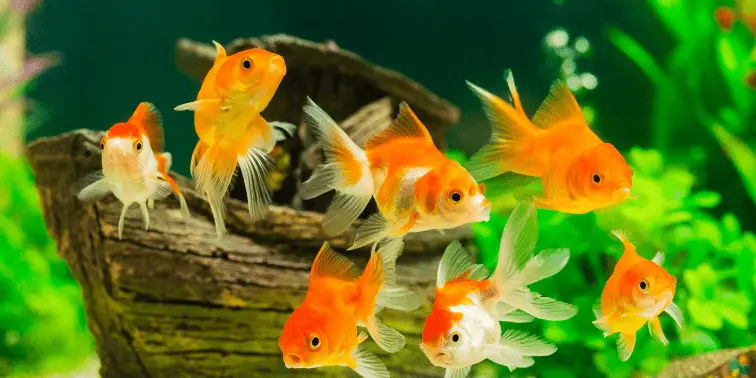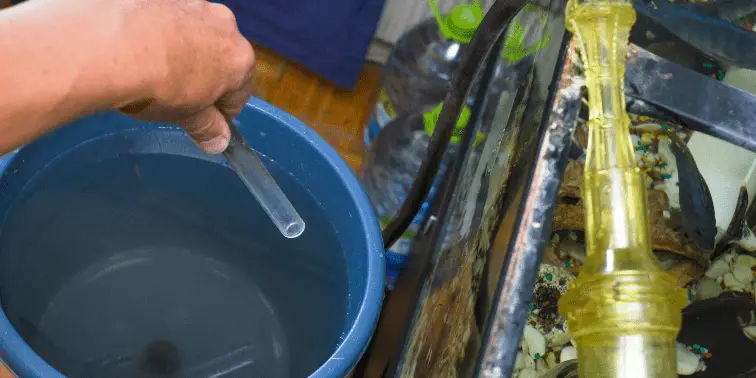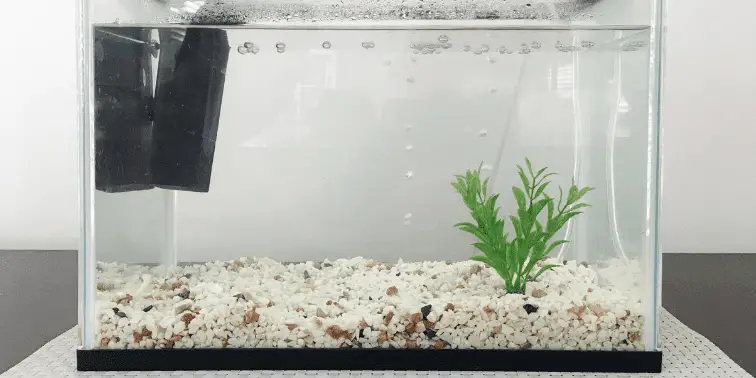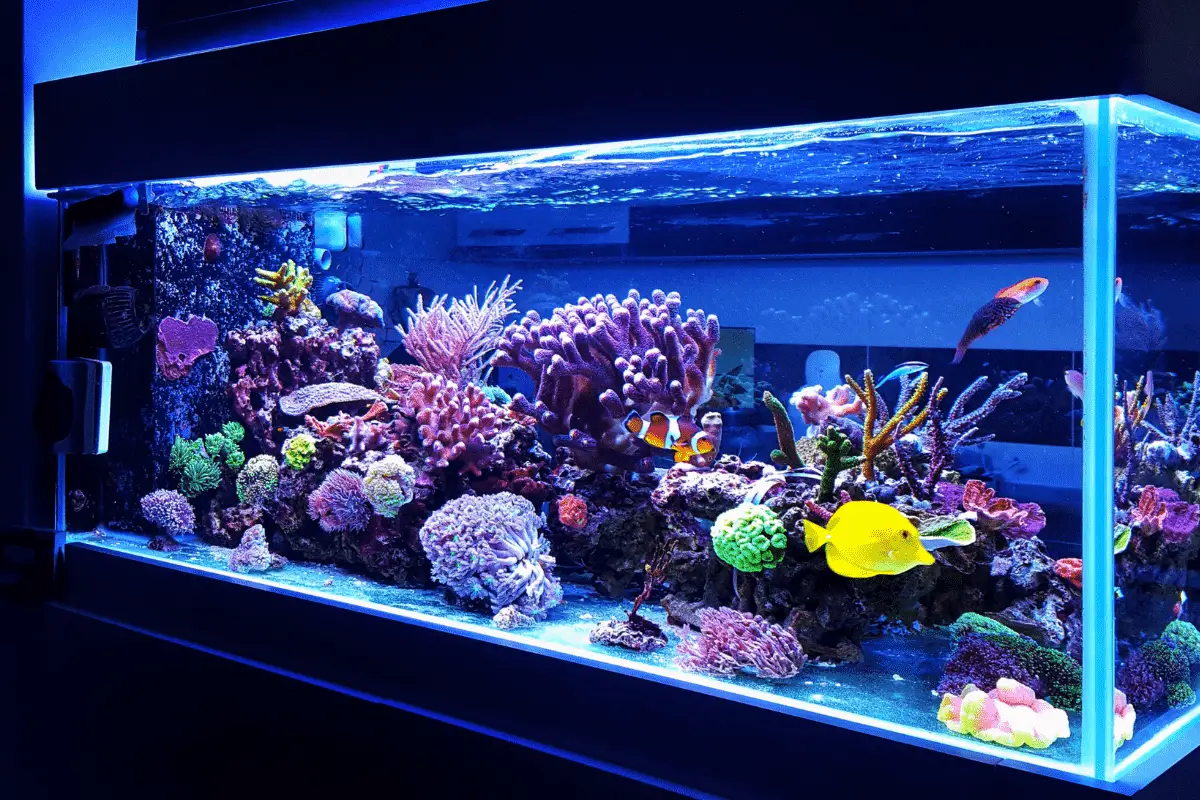Moving a long distance isn’t an easy thing. Relocating your household across the country will take plenty of planning and good organizational skills. Our animal companions need to be carefully thought of when we make our moving plans, especially our dear, silent, finned friends.
If you possess the know-how and the skill to do it properly and safely, your fish could easily be transported on a long journey. Here are some tips for a simple, stress-free move with your fish and your fish tank. Read on for the scoop on moving with fish long distance.
Table of Contents
Easy-to-Follow Steps For Moving With Fish Long Distance
Fish are fragile creatures and they’re not the best travel companions. Even the smallest mistake in their maintenance can be stressful and even fatal to them. That’s why traveling with them long distance should be done very carefully.
Moving Your Fish

With some planning, your fish can reach your new home happy and healthy. Here are some of the most important things to consider when transporting fish long distances.
1. Prepare Your Container(s)
You’ll need a large, sturdy container to safely transport your fish a long way. Plastic bags are only suitable for small fish and short travel distances of about an hour. Plastic coolers or buckets with lids are great choices. Use small ones for small fish. For larger fish, use 5-gallon buckets with secure lids.
Special boxes with Styrofoam liners or affordable Styrofoam coolers are also great options. Line the box or cooler with a plastic trash bag, tightening it around the corners, to keep the fish safe if the box gets damaged.
Get enough containers to fit your fish without overcrowding them. Also, know the types of fish you can place together since some fish species aren’t compatible.
2. Avoid Feeding Your Fish for a Day or Two Before Moving

Stop feeding your fish about two days before moving day to help keep the water clean during the trip. If they’re healthy, most fish could go without food for up to a week , so there’s no need to worry.
, so there’s no need to worry.
3. Transfer Your Fish Into Their Transport Container
Timing is everything. You’ll need to move the fish into their travel container early enough to give yourself a chance to disassemble, clean, and pack the tank. Yet, since fish are prone to stress outside of their environment, you’ll want to wait as long as possible before moving them out.
outside of their environment, you’ll want to wait as long as possible before moving them out.
Fill the travel container halfway with water from the fish tank. It’s best to use water from the top to avoid contaminants. Make sure to leave air at the top of the container. Gently transfer the fish using the fish net.
Refresh their air supply about twice a day during the trip, and avoid putting any items in the container with your fish. It’s not advisable to move your fish inside their tank. If you have no other choice though, decrease the water level, and remove any part that might shift and break the glass.
Cover the tank with plastic film to prevent water splashing, and make sure the bottom of the tank is supported while moving.
4. Move The Fish in a Regulated Temperature
Temperature regulation is very important for fish to stay healthy. So, it’s much safer to move your fish either inside your car where you can use the air conditioner or heater. Prop up and secure the buckets so they don’t tip over during travel.
to stay healthy. So, it’s much safer to move your fish either inside your car where you can use the air conditioner or heater. Prop up and secure the buckets so they don’t tip over during travel.
Also, help reduce their stress by keeping your fish in a darker environment by covering their container with a rug or sheet. This will help simulate the night for them and make them calmer and less active.
5. Resume Their Normal Feeding Schedule
Once your fish are safely settled in your new home, check on them regularly for signs of stress, which are common after a move. If you see any, call your local pet store for advice.
Moving Your Fish Tank
Despite its size and bulkiness, moving a fish tank is easy provided you know exactly what you’re doing. Once your fish are in their containers, start preparing your tank for the move using the following steps.
1. Prepare Moving Supplies in Advance
You’ll need to remove everything inside the fish tank, besides your fish, of course, so make sure you have the following essential tools on hand.
- Moving blankets
- Cardboard or plastic moving boxes/cartons
- Buckets for the plants
- Siphon hose
- Other packing supplies: foam board insulation, packing paper, bubble wrap, packing or duct tape
2. Remove Everything From the Tank
Rocks, pebbles, decorations, lights, hoses, equipment – remove, dry, and pack everything carefully. Bubble wrap anything that’s breakable, and keep the filter damp. Place the plants in their buckets and submerge them with water from the tank.
3. Drain All the Water From the Tank

Drain all the water using a siphon hose; wipe down and dry the tank. Keep the tank water; pour it into large, sealable buckets to refill later at your new home.
Avoid changing more than 20 percent of the water at once so the fish can adjust to their new environment. Completely and suddenly replacing the water in a tank could be dangerous to your fish.
so the fish can adjust to their new environment. Completely and suddenly replacing the water in a tank could be dangerous to your fish.
4. Pack Your Tank
Fish tanks are fragile, so take the time to pack your tank securely. For a small or medium-sized tank, all you need is a corrugated carton box and plenty of cushioning material. The box should be just the right size; if there’s space around the tank, fill in the gaps with packing paper.
Also, put foam board insulation at the bottom of the tank, around the sides, and in between the tank and the box. Draw arrows on the sealed box showing which side is up, and label it as containing a fragile object.
For a larger fish tank, use packing paper, bubble wrap, then moving blankets, and secure it with packing tape, straps, or rope.
Your tank could be much heavier than you think, so it’s a good idea to get help moving it. You can use the services of a moving company; there are even professional aquarium movers.
Don’t forget to pack the small fish-related items, like fish food, aquarium test strips, and water dechlorinator. Make sure not to stack anything on top of the tank.
5. Unload the Tank Quickly Upon Arrival
Moving a long distance can take some time, and it’s not advisable to keep your fish away from their environment for too long. So, unload and place your aquarium on a safe, sturdy surface first thing after you arrive at your destination.
6. Reassemble the Fish Tank

Try to limit the moving time for your fish as much as possible. Thoroughly inspect the glass for any cracks, then go on to rebuild your fish habitat. Start by filling the tank with the base gravel, pebbles, or sand; arrange the rocks, accessories, and equipment.
Fill the tank with water about halfway, then put in the coral and plants. Finally, use the fish net to transfer your fish back into their tank. Remove any built-up waste from the moving containers, and use the water to fill the tank completely.
If you need more, you could use tap water after dechlorinating it, but add it gradually to allow the fish to adjust. Wait a couple of hours before turning on the heater or pump to give the particles time to settle, and the water time to reach room temperature.
Closing Thoughts
As you can see, moving with fish long distance is a process that shouldn’t be taken lightly. If you use the right tools and follow the above steps, you’ll be able to safely transport your fish, as well as their tank, to their new home. Put them in a spot where they can get plenty of sunlight, and they’ll be happily swimming right away.

